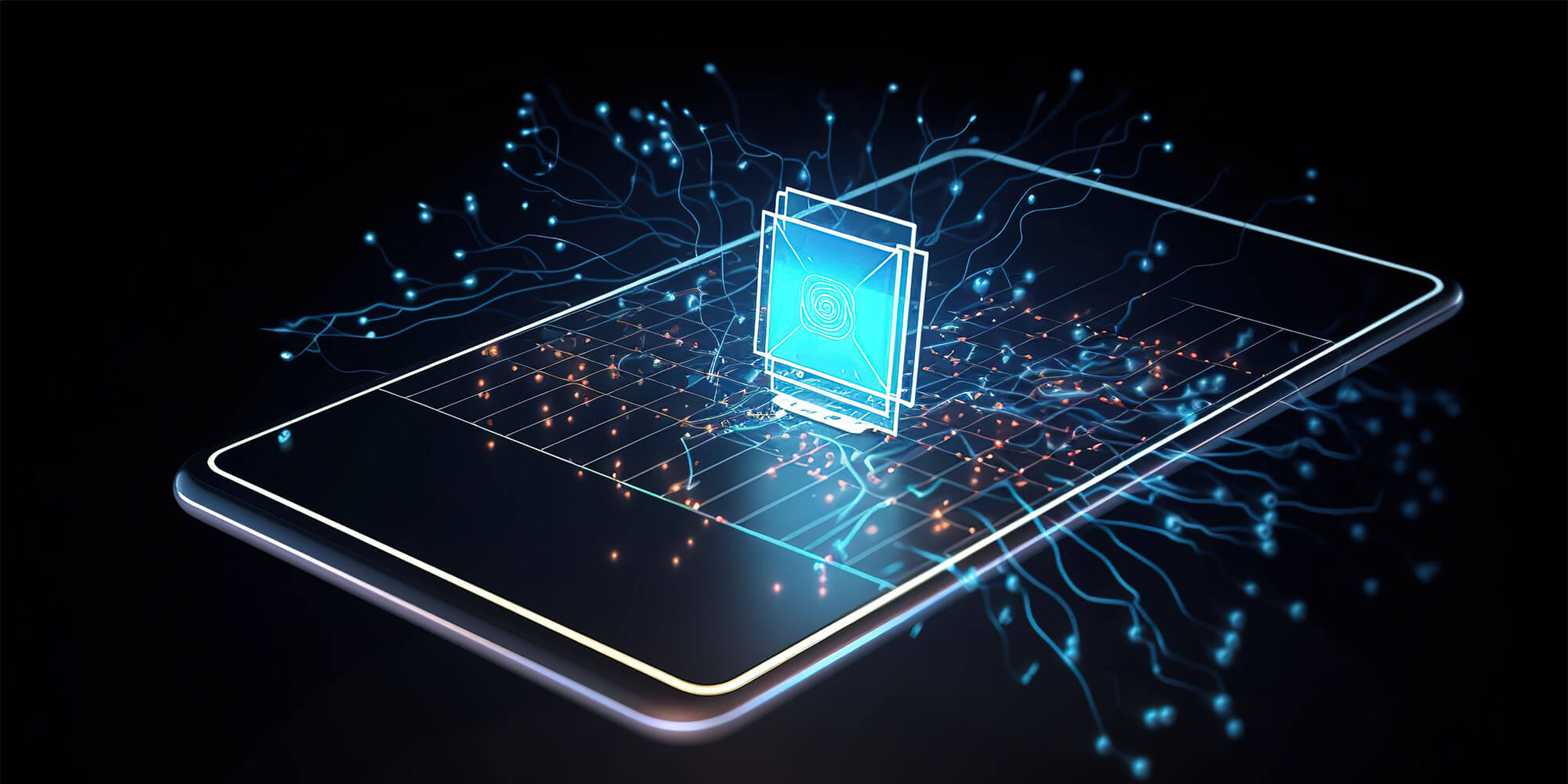SIM, eSIM and iSIM: the constant reinvention of mobile connectivity
SIM, eSIM and iSIM: the constant reinvention of mobile connectivity
21 November 2023

Our phones are mostly still connected using a SIM card, i.e. the little chip on a plastic mounting that you insert into your smartphone and activate by entering a PIN code. This process should soon be a thing of the past, however. For a few years now, designers and manufacturers have supported the virtualisation of SIM cards, known as eSIM (embedded SIM) technology, with a view to miniaturising smartphone components.
The virtualisation of SIM cards
Whether mini, micro or nano, the traditional SIM card has become considerably smaller over time. Smartphones nevertheless embed no more than one or two SIMs, limiting the amount of numbers and services available. Rather than producing a SIM card for each user, the technology now enables operators to send customer profiles to eSIM cards built into mobile handsets. When the time comes to change operator, for example, the old physical SIM card no longer needs to be replaced with a new one. And when the time comes to replace your smartphone, there's no need to fiddle with tiny bits of plastic. With eSIM cards, all you have to do is push the user profiles and data to the new device's built-in card, or transfer them from one smartphone to another. This solution helps to digitise the user experience. Some operators offer a fully digital activation process.
The virtualisation of SIM cards for end users is very advantageous for manufacturers. eSIM cards are also much more economical. They reduce the need for the raw materials that mobile phones always require. They also free up space inside devices. This may no longer be such a significant advantage for smartphones, but the space saved is much greater for smaller devices, such as watches or other connected objects.
European operators and manufacturers are still very discreet about the use of eSIM cards, although more and more smartphones offer the option of activating them. Most of these devices can still receive a SIM card, allowing users to benefit from two cards. The eSIM card can be used to activate a work number, while the SIM card is dedicated to a private number.
New uses are also emerging, as companies offer travellers data packages with eSIM cards for the countries they are travelling to, at prices close to local rates.
The iSIM card: the SIM card integrated in processors
Manufacturers are nonetheless looking ahead and seeking to take virtualisation further and further. The successor to the eSIM card is already making itself known, under the name iSIM (integrated SIM). The mobile chip giant Qualcomm is behind this innovation, announced in 2022. It is also inspiring real enthusiasm in major industrial players, such as Thales.
But what is the difference between iSIM and eSIM? For the most part, the two technologies work in the same way. The idea is again to virtualise the SIM cards in devices for end users. iSIM cards differ from eSIM cards, however, in that they are directly integrated in the device's main processor. A separate chip is no longer required, contrary to eSIM. According to the US giant, as well as saving space, iSIM technology is better integrated in the system, offering a better performance, larger storage capacity and greater security.
Connecting small objects
This very promising technology will help to improve our smartphones. iSIM’s true potential is only revealed though when we consider the world of connected objects.
It enables manufacturers to design smaller, more compact devices that are easier to transport and use. Miniaturisation means that iSIM cards are less exposed to water or dust, making them ideal for use in connected outdoor ecosystems using dedicated mobile networks, made possible by 5G. The technology also offers the advantage of being more energy efficient. The projected economic profitability of these enormous ecosystems is directly improved by these technological developments, given the reduction in design costs and energy consumption.
iSIM finally arrives
iSIM will be gradually rolled out from 2024, depending on the willingness of manufacturers to integrate this technology at the heart of their handsets. Some studies by Juniper and Thalès estimate exponential growth in eSIM and iSIM technologies over the next 3 years, with global sales of several billion euros and around a hundred million objects connected thanks to iSIM. Operators like POST are gearing up to enable their customers to take advantage of these developments and guarantee everyone the best possible experience.

Written by
Benjamin VasseurContact us
Do you have any questions about an article? Do you need help solving your IT issues?
Contact an expert







Our experts answer your questions
Do you have any questions about an article? Do you need help solving your IT issues?
Other articles in the category IoT & Connectivity
Internet access for professionals on the move
Where individual employees are regularly expected to travel or work from multiple sites, mobile data connectivity solutions are one possibility.

Author
Benjamin VasseurPublished on
18 July 2023
Why outsource your print management?
In the heart of an organisation, the management and monitoring of your printing can be a burden. What if, to meet your needs in this area, you opted for an outsourced service to monitor and manage your printing solutions, as POST offers? This approach allows you to save money, reduce your environmental footprint while contributing to the productivity of your teams and improving the security of your information
Author
Béatrice SeiwertPublished on
10 November 2022
5G: now a reality filled with opportunity
5G tackles the issue of increasing production and consumption of data through mobile devices. For smartphone users, the switch from 4G to 5G will not so much be an evolution as a revolution.

Author
Justin StephanyPublished on
04 October 2022



